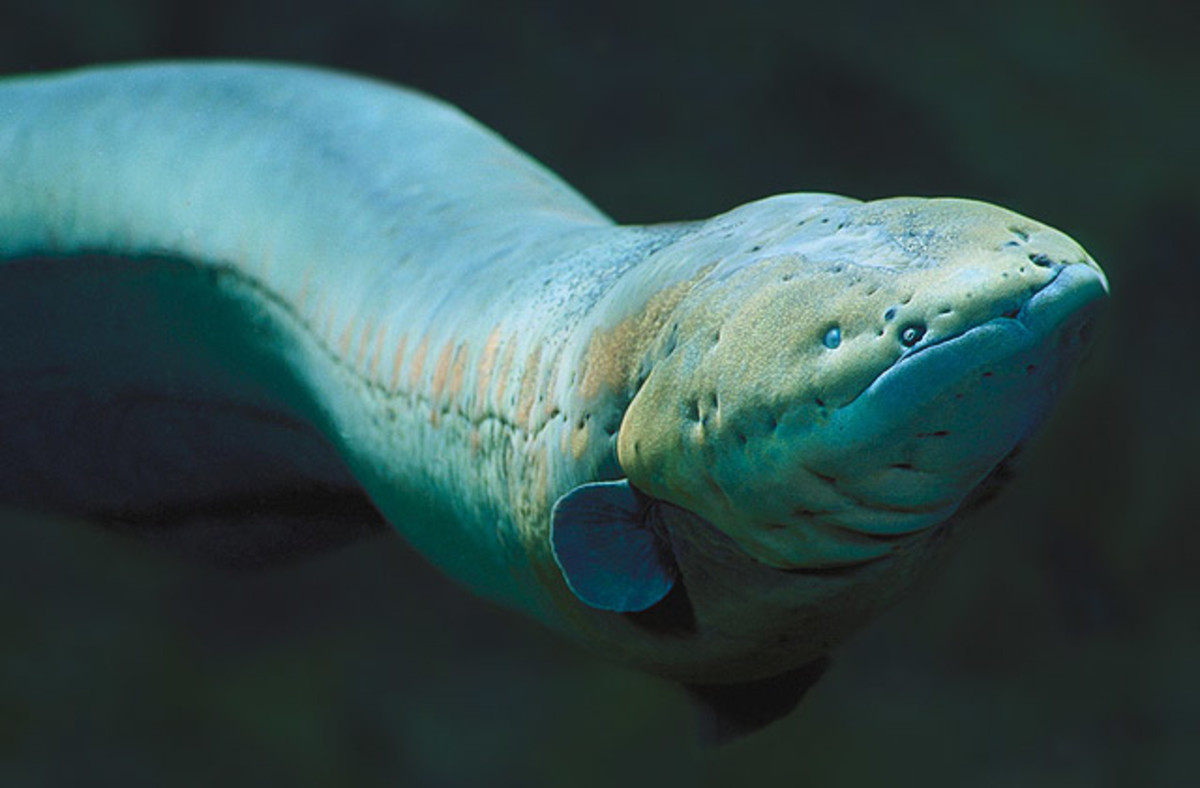Electric fish are captivating creatures, boasting extraordinary abilities that have captivated scientists and enthusiasts alike. These unique species, such as the elephantnose fish, excel in generating and sensing electric fields, allowing them to navigate their aquatic environments and communicate effectively. This remarkable talent opens the door to exciting research in NeuroAI, exploring how electric fish can inform advancements in artificial intelligence. By studying the intricate behaviors of these fish, researchers aim to unlock insights into collective intelligence — a vital aspect of both natural and technological systems. The interactions observed in electric fish may provide crucial frameworks for understanding agent interaction in complex environments, thereby shaping the future of AI development.
Aquatic bioelectricity is a term that captures the fascinating realm of creatures like the electric fish, which utilize electrical signals to navigate and interact within their habitats. These species, including the renowned elephantnose fish, are not only remarkable examples of nature’s versatility but also serve as vital subjects in the interdisciplinary study of NeuroAI. By examining their communication methods and social behaviors, scientists hope to glean insights into the mechanisms of collective intelligence that govern interactions among various agents, whether biological or artificial. The investigation of such dynamic interactions can pave the way for breakthroughs in artificial intelligence, shedding light on how group coordination evolves across different contexts. Ultimately, this research group aims to bridge the gap between biological understanding and technological advancement, highlighting the fluid relationship between nature and AI.
Understanding Electric Fish and Their Unique Abilities
Electric fish, such as the elephantnose fish, are fascinating entities that have adapted to their environments through the unique ability to generate electric fields. This capability enables them to navigate and interact in murky waters where visibility is limited. By emitting electric pulses, these fishes create a bioelectrical field that allows them to detect objects and communicate with each other, enhancing their survival in complex aquatic ecosystems. Thus, their behaviors and communications serve as essential models for studying broader phenomena in neuroscience and artificial intelligence.
Researchers like Kanaka Rajan harness the insights garnered from electric fish to explore NeuroAI, which seeks to understand intelligence from a dual perspective: both biological and artificial. The electric fish emit various pulse patterns, akin to a language, to express different events or needs, ranging from mating calls to warning signals. By analyzing these patterns, scientists can unravel the underlying mechanisms of collective intelligence and agent interaction. Such research is pivotal in advancing our grasp of how intelligent behaviors emerge from simpler actions, parallel to how AI systems might develop complex responses from base algorithms.
The Role of Collective Intelligence in Electric Fish Behavior
Collective intelligence is the phenomenon where group dynamics create richer social behaviors beyond individual contributions. In electric fish, particularly the elephantnose species, researchers have observed how these creatures exhibit remarkable cooperative behaviors during foraging. For example, when one of the fish discovers food, it generates electric signals that inform other fish in the vicinity. This coordinated action exemplifies how a group can operate efficiently, reducing individual energy expenditure through shared information, reflecting principles of collective intelligence applicable to various fields including artificial intelligence.
The implications of studying these collective behaviors extend beyond biological understanding to inform AI research. By simulating the behaviors of electric fish through artificial agents, scientists can manipulate variables to observe how cooperation and competition arise in dynamic environments. Such studies help identify patterns and strategies that may inform the development of AI systems capable of autonomous learning and decision-making. This direct correlation between electric fish behaviors and AI models reveals significant insights into how complex systems can evolve and optimize through interaction over time.
NeuroAI Insights from Electric Fish Studies
The intersection of NeuroAI with the behaviors of electric fish provides invaluable insights into the workings of intelligence. The weakly electric fish, like the elephantnose, serve as models for understanding how neural networks in both biological creatures and artificial agents process information. The use of electric organ discharges (EODs) for communication parallels information encoding methods in AI, highlighting how both systems rely on signals to convey meaning. Researchers in NeuroAI leverage these findings to design algorithms that mimic these natural processes, enhancing the efficiency of AI communications.
Moreover, the concept of collective intelligence from electric fish translates into how artificial systems can operate cohesively. By studying how these fish interact, researchers can derive principles applicable to AI systems where agent coordination is required. Such findings might unlock new avenues for developing AI technologies that leverage group dynamics to solve complex problems. Whether it’s through simulating environments to observe interactions or creating models that replicate fish communication, the implications for artificial intelligence are profound and continue to drive exploration within NeuroAI.
Agent Interaction: Lessons from Electric Fish Communication
Electric fish showcase compelling mechanisms of agent interaction through their unique communication methods. Their use of electric pulses to convey information exemplifies how simple signals can lead to coordinated behaviors crucial for survival. Rajan and her team’s work on artistically modeling these interactions enables a better understanding of how various agents, whether biological like fish or synthetic like AI, communicate effectively. By analyzing the patterns and results from these interactions, researchers glean insights on the mechanics of information sharing—an integral aspect of collective intelligence.
In exploring agent interaction through the lens of electric fish, researchers aim to answer critical questions about communication’s role in intelligent systems. The electric fish display simple yet effective forms of communication that challenge our assumptions about complexity in social interactions. Such simplifications could inform how AI agents learn to communicate and collaborate in real-world applications. The potential to establish advanced AI systems that mimic these natural interactions indicates an exciting frontier in the development of smarter, adaptable technology.
Emergent Behaviors in Electric Fish and AI Models
The emergent behaviors observed in electric fish provide a unique perspective on how intelligence can arise from collective interactions. Studies have shown that when these fish cooperate in locating food, the overall group efficiency surpasses individual actions, illustrating the principles of emergent behavior. This phenomenon can be directly linked to the field of artificial intelligence, where similar emergent behaviors in AI agents could lead to optimized solutions in tasks requiring teamwork. The ability of electric fish to adapt their communication and behaviors to maximize survival creates a blueprint for developing intelligent systems.
By modeling the behavior of electric fish through AI simulations, researchers can explore how various factors influence emergent behavior in collective settings. These models allow scientists to manipulate evolutionary scenarios, revealing how cooperation and competition evolve based on environmental contexts. Findings from such experiments hold significant implications not only for understanding biological constructs but also for enhancing AI algorithms that require cooperative dynamics. This cross-disciplinary approach underscores the value of interdisciplinary research in driving advancements in both neuroscience and artificial intelligence.
The Impacts of Resource Availability on Electric Fish Behavior
Resource availability plays a crucial role in shaping the behavior of electric fish, particularly in terms of their cooperative and competitive dynamics. Research has demonstrated that when food sources are abundant, electric fish are more likely to exhibit collaborative foraging behaviors. Conversely, diminished resources prompt a shift towards competitive interactions, revealing a clear link between environmental factors and social behaviors. These observations can inform AI systems about resource management and optimal group behaviors, solidifying the relevance of biological studies in technological advancements.
This understanding of resource-driven behavioral shifts in electric fish is instrumental for AI researchers aiming to create systems that can adapt to fluctuating environments. By studying how electric fish navigate resource scarcity, insights can be gleaned into how AI agents might optimize their responses to changing data or conditions. As AI continues to evolve, applying principles observed in the natural behaviors of species like the elephantnose fish may enhance the adaptability and efficiency of artificial systems, facilitating better decision-making strategies.
Electric Fish and the Future of Artificial Intelligence Development
The studies of electric fish, especially the elephantnose species, signal a promising direction for future developments in artificial intelligence. By understanding the inherent social dynamics of these aquatic creatures, researchers can gain insights into building collaborative AI agents that mirror the cooperative behaviors found in nature. As AI systems increasingly require collaboration to solve complex problems, the lessons learned from electric fish interactions can feed into the design of systems that work together harmoniously, akin to the coordinated multifactorial operations in their biological counterparts.
In harnessing the evolutionary lessons of electric fish, AI development could embrace principles of collective intelligence rooted in nature. The capacities for cooperation observed in these species suggest that successful AI interactions need not be isolated but should emphasize collaborative frameworks. Continued exploration into how electric fish behave and communicate lays the groundwork for integrating these natural principles into the design of future intelligent systems, marking a transformative step towards more adaptive, responsive AI technologies.
Exploring New Frontiers in NeuroAI through Electric Fish Models
The ongoing research into electric fish serves as a vital springboard for exploring new frontiers in NeuroAI, particularly in understanding cognitive processes and agent interactions. By developing models based on the behaviors of electric fish, scientists are not merely investigating aquatic ecosystems but are also translating insights into potential architectures for AI systems. These models possess the ability to simulate various scenarios, allowing for nuanced exploration of how intelligent behavior emerges from both individual and collective actions, ultimately leading to advanced AI designs.
Rajan’s work emphasizes how the simplicity of electric fish communication provides a platform for studying complex interactions that could redefine our approaches to AI development. Insights gained from the models can elucidate how AI agents might interact, collaborate, and evolve over time, mirroring the principles of natural selection found in the animal kingdom. By integrating findings from electric fish studies, researchers can propel the development of AI toward more sophisticated, socially-aware systems capable of adapting not only to individual challenges but also to collaborative problem-solving scenarios.
The Interconnectedness of Biology and Artificial Intelligence through Electric Fish Studies
The interconnectedness of biological research and artificial intelligence is exemplified through the study of electric fish. By delving into the behavioral dynamics of species like the elephantnose fish, researchers can draw parallels to AI systems that rely on communication and coordination. This interdisciplinary synergy enhances our comprehension of how social dynamics function in both nature and technology, opening new pathways for innovation in AI development. The electric fish’ method of communication can be seen as a model for evolving AI strategies where each agent’s actions inform and influence the collective operation.
Moreover, the exploration of how electric fish adapt their behaviors in response to their environment provides actionable insights for developing resilient AI systems. As AI researchers analyze how these fish establish their social networks and communicate effectively, they can apply these findings to enhance the resilience and efficiency of artificial agents. The alignment of biological principles with artificial intelligence empowers scientists to create smarter, more adaptable models that can thrive in complex, dynamic environments, potentially leading to breakthrough technologies in various fields.
Frequently Asked Questions
What is the significance of electric fish in understanding NeuroAI?
Electric fish, particularly the elephantnose fish, provide valuable insights into the emerging field of NeuroAI. By studying how these fish communicate and perceive their environment through electric signals, researchers like Kanaka Rajan are uncovering principles of collective intelligence that could enhance the development of artificial intelligence systems.
How do elephantnose fish contribute to the study of agent interaction?
Elephantnose fish exemplify agent interaction as they communicate and coordinate behavior through electric pulses. Their ability to share information about food sources highlights complex social dynamics, which researchers are modeling to understand collective intelligence in both biological and artificial systems.
What unique abilities do electric fish possess that aid scientific research?
Electric fish, such as the elephantnose fish, can generate and detect electric fields, allowing them to navigate murky waters and communicate with one another effectively. This unique sensory mechanism is a key area of research in NeuroAI, shedding light on how simple interactions can lead to collective intelligence.
How can the behaviors of weakly electric fish inform AI development?
The behaviors of weakly electric fish provide a basis for modeling how collective intelligence arises. By simulating their interactions, researchers can explore how multiple agents, whether biological or artificial, can develop coordinated strategies that improve problem-solving and adaptability in AI systems.
What role do electric pulses play in the life of electric fish?
Electric pulses are central to the lives of electric fish like the elephantnose fish. These pulses facilitate communication, navigation, and social interactions, such as mating and foraging. Understanding how these signals function helps researchers investigate more complex systems of communication in both nature and AI.
Can studying electric fish help in understanding competition and cooperation in other species?
Yes, the study of electric fish can reveal insights into the dynamics of competition and cooperation in other species, including humans. The behaviors observed in elephantnose fish, particularly their responses to available food sources, suggest that similar principles may govern social interactions in various contexts.
Why are electric fish considered models for studying collective intelligence?
Electric fish are seen as ideal models for studying collective intelligence due to their straightforward communication methods and social behaviors. Their interactions provide a foundation for understanding how emergent properties arise from individual actions, which is crucial for advancing both biological and artificial intelligence studies.
What implications does research on electric fish have for future AI systems?
Research on electric fish has the potential to influence future AI systems by revealing fundamental principles of collective intelligence. The ability of AI agents to learn from and cooperate with one another, inspired by the coordinated behaviors of electric fish, could lead to the development of more efficient, adaptable, and intelligent systems.
| Key Points |
|---|
| Electric fish, like the elephantnose fish, can sense their environment through electric fields, which is integral to studying NeuroAI. |
| Research on these fish can inform the understanding of collective intelligence, demonstrating how groups interact beyond individual behaviors. |
| The study involves using computer models that simulate the behaviors of electric fish to analyze cooperation and competition within groups. |
| Findings suggest ecological factors, like food availability, affect the balance between competition and cooperation in social behaviors. |
| Insights from electric fish can lead to advancements in AI, particularly in developing cooperative AI systems that mimic natural collective intelligence. |
Summary
Electric fish offer remarkable insights into collective intelligence, highlighting how these fascinating creatures navigate their environments and interact socially through electric fields. Their study not only enhances our understanding of animal behavior but also provides a foundation for advancing artificial intelligence systems. By examining the coordinated communication of electric fish, researchers can uncover principles that might enable AI systems to collaborate more effectively, ultimately leading to innovative technological solutions.



